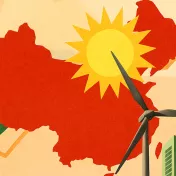The Nansen Initiative, which ended in 2015, developed a comprehensive "Protection Agenda” over the course of 3 years, which to date has been endorsed by over 100 countries. Although not producing new legal regulations, the initiative was pioneering in that it was the first intergovernmental process to work on protecting people displaced across borders by disasters and in the context of climate change. Its focus on exploring existing political instruments in order to close the protection gap has made for a solid foundation for further work. Now next steps are to be taken.
Istanbul: Launching a Platform
Implementing the recommendations of the “Protection Agenda” is the next key step. Therefore, a new body was established and launched at the World Humanitarian Summit in Istanbul in May this year. This so-called Platform on Disaster Displacement will start its work officially in July 2016. Germany will be chair of the Platform's steering group for the next one and a half years and Bangladesh will act as vice-chair. Both committed themselves in Istanbul to protect and assist people displaced by disaster.
The initial Nansen Initiative steering group expanded in number to 18 states, representing both the Global South and North. While the Platform has set out its priorities for the next three years (2016-2019), it is not yet clear how the Protection Agenda will be put into practice.
For many affected countries like Small Island Developing States and their vulnerable populations, it is essential to see this process gain in ambition and urgency.
Fiji's Prime Minister Josaia Voreqe Bainimarama said in Istanbul: "I assure the world that we in Fiji will welcome the people of Kiribati and Tuvalu as Pacific brothers and sisters with open arms. But we will need the assistance of the global community to do so. And the search for a proper framework begins now.”
Aside from the Platform on Disaster Displacement, a “task force” set up by the COP21 Paris climate conference looks to also further anchor and vitalize the issue of climate change and migration in the UN climate negotiations.
Paris: Activating a Task Force
In Paris, the much-talked-about "climate displacement facility" within the draft negotiation text, which looked to act as an international mechanism to coordinate cross-border displacement in the context of climate change, did not ultimately materialize.
Instead, a "task force on climate-related displacement" was established under theWarsaw International Mechanism on Loss and Damage. While the task force is only included in the related decision of the Paris outcome, it is not a part of the legally binding Paris agreement itself.
The concrete focus and priorities - to be reflected in future terms of references - of the task force are also yet to be determined. The Executive Committee of the Warsaw International Mechanism on Loss and Damage will decide about these at its next meeting on 19-23 September 2016. In advance of this, experts were asked to share their perspectives and expertise on internal and cross-border migration displacement and other forms of human mobility, with 21 organisations providing submissions.
Addressing data gaps and policy coherence
As the Nansen Initiative and UNFCCC have already cooperated closely, their two new bodies pose a great opportunity to further strengthen synergies and avoid duplication. Both the task force and the Platform should stand ready to cooperate and coordinate work with each other. During two side events at the Bonn Climate Change Conference in May 2016, policymakers and experts from the Internal Displacement Monitoring Centre (IDMC), the United Nations University (UNU), International Organization for Migration (IOM), and others, discussed the available information to support policymakers in responding to climate-induced displacement as well as the role of the two new bodies. Key challenges remain and have to be addressed immediately, including:
Knowledge and data gaps: Slow onset hazards are already affecting and displacing many persons around world, but there are still no assessment tools to assess slow-onset displaced people which could be used to include them systematically into policy;
Policy coherence: Diverse and parallel political processes and agendas, e.g. those at UNFCCC, World Humanitarian Summit, Sendai Framework for Disaster Risk Reduction, the 2030 Agenda for Sustainable Development with their Sustainable Development Goals, UN General Assembly, etc. should be brought together to learn lessons from each other and to avoid fragmentation moving forward;
Adequate practices to address and implement cross-border disaster displacement
We are interested in seeing how this very crucial work for many affected countries and people will take off and how agendas will be translated into action. No doubt COP22 in Marrakech will provide the next international stage to provide insights into the state of the process.
- This post was first published at TransRe -





